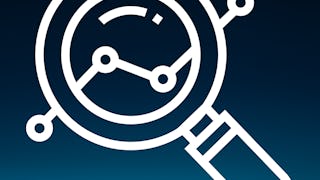This course will cover the steps used in weighting sample surveys, including methods for adjusting for nonresponse and using data external to the survey for calibration. Among the techniques discussed are adjustments using estimated response propensities, poststratification, raking, and general regression estimation. Alternative techniques for imputing values for missing items will be discussed. For both weighting and imputation, the capabilities of different statistical software packages will be covered, including R®, Stata®, and SAS®.


Dealing With Missing Data
This course is part of Survey Data Collection and Analytics Specialization

Instructor: Richard Valliant, Ph.D.
12,377 already enrolled
Included with
(138 reviews)
Skills you'll gain
Details to know

Add to your LinkedIn profile
21 assignments
See how employees at top companies are mastering in-demand skills

Build your subject-matter expertise
- Learn new concepts from industry experts
- Gain a foundational understanding of a subject or tool
- Develop job-relevant skills with hands-on projects
- Earn a shareable career certificate

There are 5 modules in this course
Weights are used to expand a sample to a population. To accomplish this, the weights may correct for coverage errors in the sampling frame, adjust for nonresponse, and reduce variances of estimators by incorporating covariates. The series of steps needed to do this are covered in Module 1.
What's included
7 videos7 readings7 assignments
Specific steps in weighting include computing base weights, adjusting if there are cases whose eligibility we are unsure of, adjusting for nonresponse, and using covariates to calibrate the sample to external population controls. We flesh out the general steps with specific details here.
What's included
6 videos6 readings5 assignments
Software is critical to implementing the steps, but the R system is an excellent source of free routines. This module covers several R packages, including sampling, survey, and PracTools that will select samples and compute weights.
What's included
6 videos5 readings4 assignments
In most surveys there will be items for which respondents do not provide information, even though the respondent completed enough of the data collection instrument to be considered "complete". If only the cases with all items present are retained when fitting a model, quite a few cases may be excluded from the analysis. Imputing for the missing items avoids dropping the missing cases. We cover methods of doing the imputing and of reflecting the effects of imputations on standard errors in this module.
What's included
6 videos5 readings5 assignments
We briefly summarize the methods of weighting and imputation that were covered in Course 5.
What's included
1 video1 reading
Earn a career certificate
Add this credential to your LinkedIn profile, resume, or CV. Share it on social media and in your performance review.
Instructor

Offered by
Explore more from Data Analysis
 Status: Free Trial
Status: Free TrialUniversity of Michigan
 Status: Free Trial
Status: Free TrialGoogle
 Status: Free Trial
Status: Free TrialJohns Hopkins University
 Status: Preview
Status: PreviewUniversiteit Leiden
Why people choose Coursera for their career




Learner reviews
138 reviews
- 5 stars
42.75%
- 4 stars
24.63%
- 3 stars
13.04%
- 2 stars
8.69%
- 1 star
10.86%
Showing 3 of 138
Reviewed on Dec 24, 2017
This is a higher level course. Good for beginners.
Reviewed on Aug 19, 2019
interesting material, well taught, lots of short quizzes to enforce understanding.
Reviewed on Jun 4, 2017
This course quite help to get as much reliable data as possible for any survey.

Open new doors with Coursera Plus
Unlimited access to 10,000+ world-class courses, hands-on projects, and job-ready certificate programs - all included in your subscription
Advance your career with an online degree
Earn a degree from world-class universities - 100% online
Join over 3,400 global companies that choose Coursera for Business
Upskill your employees to excel in the digital economy
Frequently asked questions
To access the course materials, assignments and to earn a Certificate, you will need to purchase the Certificate experience when you enroll in a course. You can try a Free Trial instead, or apply for Financial Aid. The course may offer 'Full Course, No Certificate' instead. This option lets you see all course materials, submit required assessments, and get a final grade. This also means that you will not be able to purchase a Certificate experience.
When you enroll in the course, you get access to all of the courses in the Specialization, and you earn a certificate when you complete the work. Your electronic Certificate will be added to your Accomplishments page - from there, you can print your Certificate or add it to your LinkedIn profile.
Yes. In select learning programs, you can apply for financial aid or a scholarship if you can’t afford the enrollment fee. If fin aid or scholarship is available for your learning program selection, you’ll find a link to apply on the description page.
More questions
Financial aid available,

